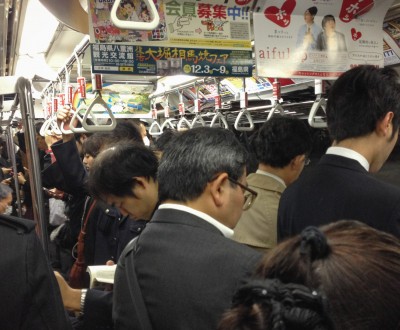Japan and its casual racism
Facing a strong trend of depopulation, immigration might soon become an essential tool in tackling the aging population of Japan. Japan’s genetic homogeneity, related to living on an island (only the Ainu, recently recognized, stand out from this poor genetic diversity), may unconsciously encourage diverse forms and levels of discrimination.
As White westerners in Japan, the most common situations met in the country are probably the following:
- people assume you are American, or at least from English-speaking countries, as they will come to talk to you in English;
- if you live in Japan, it means you are a language professor (English or other languages depending on your nationality);
- as you must know nothing about the culture and language of Japan, we might thank you like a child if you use chopsticks or say "arigatô."
These are forms of acceptable clichés, without the intention of hostility, yet they remain tiring for fully-integrated expats. Sometimes, the relations can be more insidious, and the stereotypes can be stronger toward Black people, who Japanese people sometimes have a difficult time comprehending (they do not see many, especially in the countryside). Regarding biracial people, the integration of mixed-race half-Japanese, totally legitimate, can create issues, as proven by many testimonies.
All types of discrimination
The most severe racists are 右翼団体 uyoku dantai. These extreme right-wing groups are very noisy and imposing each 11th of February (a public holiday commemorating the National Foundation Day), during their "gathering" in Yasukuni Shrine in Tokyo. All year round, we can see them around the capital, at a slow pace in their 街宣車 gaisensha, small trucks and other black buses ornamented with Japan’s flag (and even the flag of the Japanese Marine Force). They chant their nationalistic and hate speech and other military slogans via megaphones, asking for the return of a real Japanese army. These advocates of Japan’s actions during the second world war are quite famous, some are even affiliated with yakuza groups. For information, the current Jiminto political party of Shinzo Abe is center-right.
Japan introduced in 2016 a law against hate speech targeting specific ethnies but with no penalty or ban action, therefore allowing in fact total freedom for these kinds of actions. However, in 2013, a first jurisprudence of its kind based on the International Convention of the United Nations punished one of these groups, Zaitokukai, with more than ¥12 million (~US$76,977) in damages and interest for racial discrimination. Let’s hope this will calm down these hateful actions.
The most frequent targets of Japanese hate groups are the 在日韓国人 Zainichi Koreans, a minority group among the most important on the archipelago, from a nation that has had complicated relations with Japan for a long time. For exampe, in spring 🌸 2013, stormy demonstrations burst out in Shin-Okubo, the Korean district next to Shinjuku, between "anti" and "anti-anti" groups. The release of Hayao Miyazaki’s animated movie The Wind Rises in summer 2013 created vigorous debates on the Internet 📶 regarding the pro-military or anti-patriotism position of the director, depending on where the critics came from (from one side or the other of the Inland Sea of Japan).
Beyond national origin, weight has been targeted in Osaka: in this trivial example cited by The Associated Press, each kilo of a renter’s weight would add or remove ¥1,000 (~US$6.41) from the rent!
Anyway, before blaming what is happening in Japan, let’s review what might also be going on in our own country, or in any other country in the world. Moreover, as a tourist, you will probably not experience any sort of racism during your travels.


